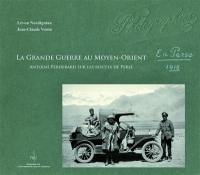
Fiche technique
Format : Broché
Nb de pages : 459 pages
Poids : 1050 g
Dimensions : 19cm X 26cm
ISBN : 979-10-95034-31-5
EAN : 9791095034315
L'architecture militaire dans l'Empire sassanide
Quatrième de couverture
La recherche proposée ici est le fruit de treize ans de recherches sur le terrain en Iran et en Afghanistan. Ce travail est le premier du genre dans ce secteur de la recherche scientifique, qui aborde le monde sassanide sous l'angle des systèmes fortifiés. L'auteur propose, une présentation de l'Empire sassanide, les sources de son histoire, la toponymie, les forces et les faiblesses de ce vaste empire, les emprunts et les synthèses fondés sur ses relations tant avec l'espace des steppes qu'avec l'occident romano-byzantin. Les architectures fortifiées sont la conséquence de l'art de la guerre chez les Sassanides, leur stratégie, leurs techniques, leurs innovations militaires. La répartition des vestiges repérés, leur adaptation au relief, sont mises en relation tant avec la géographie, la topographie qu'avec les différentes unités territoriales existantes. L'analyse met en exergue les périodes clés de l'architecture militaire sassanide, du IIIe siècle à la conquête arabe du VIIesiècle, en insistant sur un IIIe siècle héritier des techniques parthes puis influencé par l'ingénierie romaine, un VIe siècle au cours duquel se développent les grandes forteresses-refuges sur les reliefs, enfin le moment de la conquête arabe et de la résistance rurale. La lecture des 260 sites étudiés met en valeur les spécificités de l'architecture fortifiée sassanide, les matériaux, les formes et les adaptations au milieu naturel, à la rareté de l'eau et aux tremblements de terre.
The present study is the fruit of thirteen years of field research in Iran and Afghanistan. This work, the first of its kind in this sector of scientific research, approaches the Sasanian world from the angle of military systems. The author offers an image of the Sasanian Empire, the sources of its history, toponymy, the strengths and weaknesses of this vast empire, and its borrowings and syntheses based on its relations both with the space of the steppes and with the Roman-Byzandne West. The fortified architectures are the consequence of the art of war among the Sasanian, and their strategies, techniques, and military innovations. The distribution of the identified remains and their adaptation to the relief are related to the geography, topography and different existing territorial units. This analysis highlights the key periods of Sasanian military architecture, from the 3rd century to the Arab conquest of the 7th century, emphasizing a 3rd century heir to Parthian techniques then influenced by Roman engineering, a 6th century during which the great fortresses-refuges develop on the reliefs, finally the moment of the Arab conquest and the rural resistance. An analysis of the 260 sites studied here highlights the specificities of Sasanian fortified architecture and its materials, forms and adaptations to the natural environment, droughts and earthquakes.













